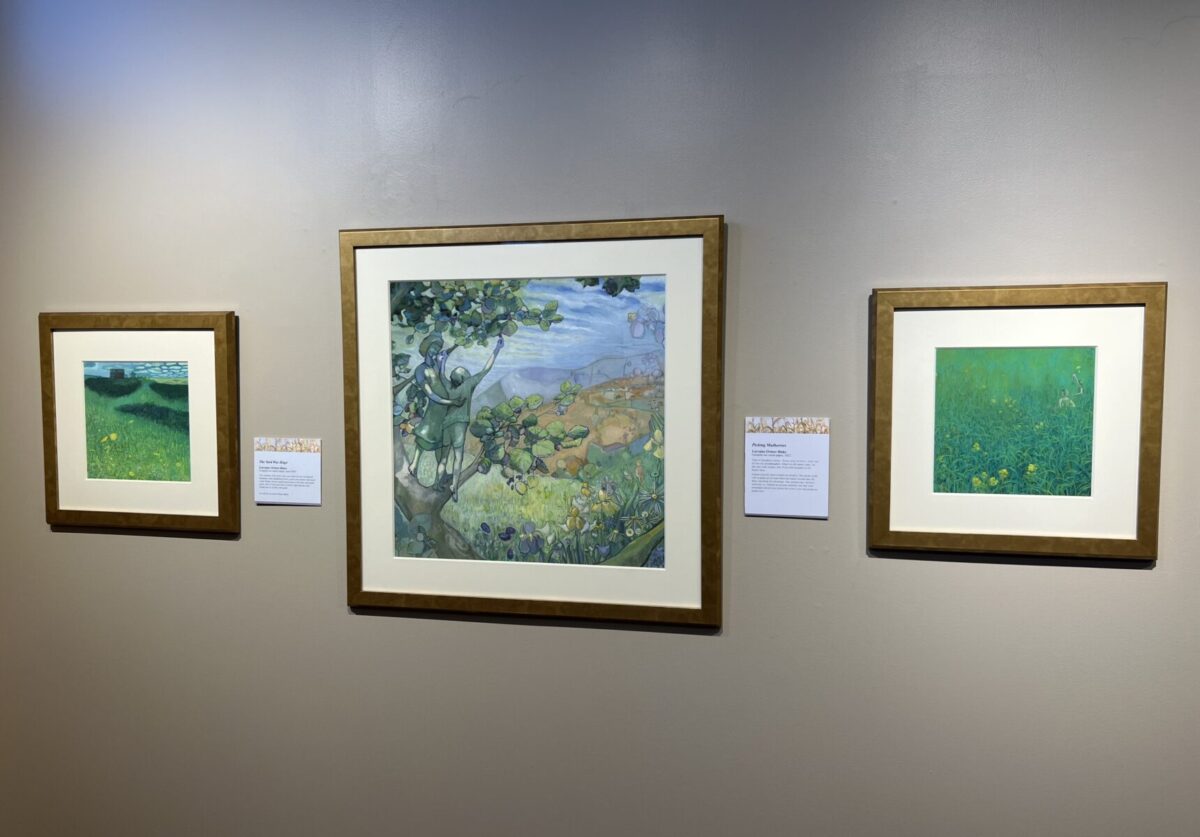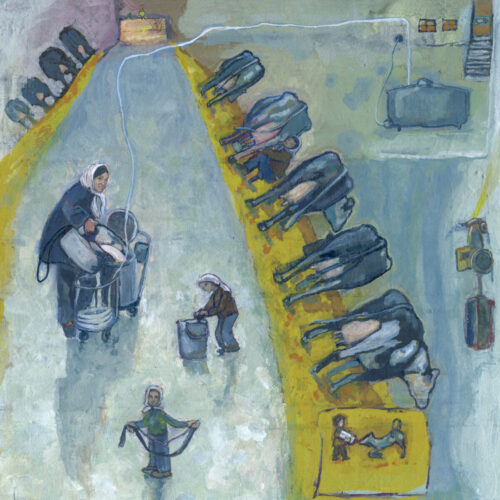March 22- Aug. 18, 2024
Lorraine Ortner-Blake provides a provocative exhibition about the changes in farming in recent decades. Her mural and collage-like images give the feeling of change and uncertainty for many as well as beauty and encouragement for us all to continue the values of embracing work and the land.
Farming in the Midwest:
“My series of paintings portray the enduring memories from my mother and siblings from 1900s Wisconsin farm culture. These 25 paintings are a tribute to Midwest farm families. My goal is to expand a personal story to a universal agricultural history, to emotionally connect with a more urban audience.
“My paintings embrace a semi-realistic and primitive manner. I distort perspective, overlap timelines, and include objects of personal symbology. The paintings are small, intimate, done in gouache, on cotton paper or wood. Gouache allows detail; its flat surface is inviting, friendly. Using gouache allows my paintings to tell stories. My aim is to represent not primarily outward appearances, but the inward significance.
Wisconsin’s economic—and physical—landscape has changed, continues to evolve. I am compelled to record the precious experiences of a rural generation that worked the land in the post-war 1900s Midwest. My paintings began as a visual poem to my mother, to honor her life as a partner on a Wisconsin dairy farm. My siblings’ stories add to the tale.
Wisconsin Agriculture
Here are some statistics about the farm world of an earlier time. In the 91 years my mom has lived, worked, and been dedicated to farm and family, these are changes she’s seen.
- 1940: Wisconsin has about 167,000 farms of about 122 acres each.
2020: There are about 11,000 farms of roughly 221 acres. - 1940: About 28 percent of the population in Wisconsin are farmers.
2020: About 2.7 percent are farmers. - 1940: Average age of a Wisconsin farmer is 47.
2021: The average age is about 57.
See more from Lorraine here.






